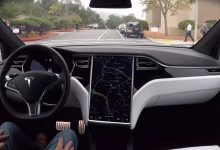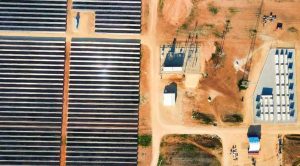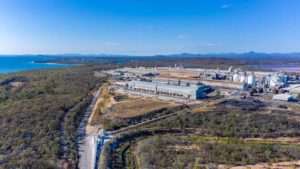Amid the dissection of Tesla’s second quarter 2018 earnings call last week came the big reveal that Tesla is working on its own AI chip, which founder Elon Musk says will do the job of automated driving much, much more efficiently than the Nvidia GPU currently on board Tesla car computers.
There was a little trumpeting about the new features that will be available in the next V9.0 Autopilot release, which Musk announced on Monday – such as a lane-changing solution that will allow Tesla vehicles to move automatically from on-ramp to off-ramp.
But the big news was all about the Tesla AI.
It’s a project that has been in “semi-stealth mode basically for the last two to three years,” Musk told the call’s webcast attendees.
“I think it’s probably time to let the cat out of the bag because the cat’s going to come out of the bag anyway.”
That cat is a neural network that the Tesla Autopilot team, headed by former Apple hardware architect Peter Bannon, have created from the ground up, bringing with it huge processing power.
“It’s a plug-in replacement for the existing computer and enables an order of magnitude improvements in operations per second or frames per second as a way to think about it,” Musk explained, introducing other key heads from the Autopilot team, Stuart Bowers and Andrej Karpathy.
A lot of neural nets these days are accelerated by adding GPUs to process the visual matrix, but this system has inherent constraints as the GPU and CPU run in emulation mode.
“…pretty much everywhere we looked…they were adding something to accelerate neural networks,” said Bannon.
But nobody was doing a bottoms-up design from scratch, which is what we elected to do.”
Along with Bowers – an expert in machine learning who once worked at Facebook – and director of AI Karpathy who has 10 years at Neural Networks under his belt, the team put their collective heads together to create a neural network that runs on the CPU chip itself.
“Essentially the key is to be able to run the neural net at a fundamental, at a bare metal level so that it’s especially doing the calculations in the circuits itself and not in some sort of emulation mode which is how a GPU or a CPU would operate,” Musk elaborated.
“…it’s an incredible job by Pete and his team to create this, the world’s most advanced computer designed specifically for autonomous operation,” Musk said thanking the Autopilot team.
Handling 100 times more frames than the current system – 2,000 fps compared to the 200 handled by the Nvidia GPU – the new AI computer won’t be any more expensive than the current computer either, and replacing it as simple as taking out the old one and plugging in the new, said Musk.
“All the connectors are compatible and you get an order of magnitude, more processing and you can run all the cameras at primary full resolution with the complex neural net. So it’s super kick-ass,” Musk said.
To make the AI chip reality, Musk says that Tesla will bring more talent in on the chip team to make it a reality as soon as possible.
“I think we have some of the best aces in the world, but I think we want to build on that even more.”







